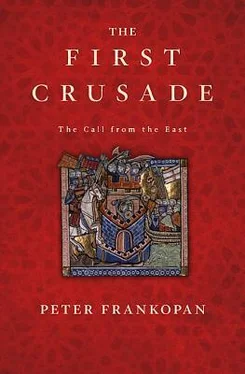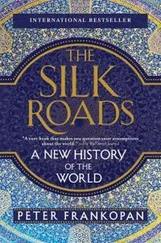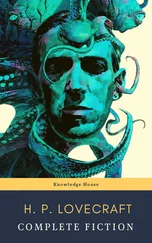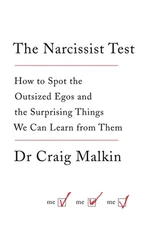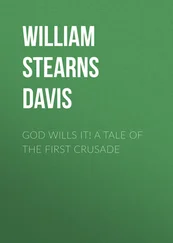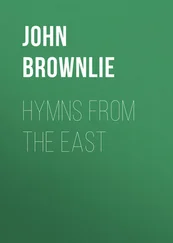The Norman conquest of southern Italy is brilliantly set out by Hartmut Hoffmann in ‘Die Anfänge der Normannen in Süditalien’, in Quellen und Forschungen aus Italienischen Archiven und Bibiliotheken , 47 (1967), pp. 95–144, though Graham Loud’s pioneering work has moved this on in recent years, for example, The Latin Church in Norman Italy (Cambridge, 2007) and ‘Coinage, wealth and plunder in the age of Robert Guiscard’, English Historical Review , 114 (1999), pp. 815–43. Also see his The Age of Robert Guiscard : Southern Italy and the Norman Conquest (Singapore, 2000). Jean-Marie Martin’s La Pouille du VIe au XIIe siècles (Rome, 1993) remains the benchmark for surveys of southeastern Italy. The recent article by Paul Oldfield, ‘Urban government in southern Italy, c.1085–c.1127’, English Historical Review 122 (2007), pp. 579–608 also offers interesting insights into Norman control of southern Italy, as does his book City and Community in Norman Italy (Cambridge, 2009).
For Byzantine relations with the Normans, see Huguette Taviani-Carozzi, La Terreur du monde – Robert Guiscard et la conquête normande en Italie (Paris, 1997). Articles by William McQueen, ‘Relations between the Normans and Byzantium 1071–1112’, Byzantion 56 (1986), pp. 427–76, and Matthew Bennett, ‘Norman naval activity in the Mediterranean c .1060–1108’, Anglo-Norman Studies 15 (1992), pp. 41–58 offer helpful examinations of the attacks on Byzantium.
The trade treaty with Venice is of crucial importance, and has been looked at exhaustively. Thomas Madden’s ‘The chrysobull of Alexius I Comnenus to the Venetians: The date and the debate’, Journal of Medieval History 28 (2002), pp. 23–41 is excellent; however, I have major doubts about the internal evidence in the text of the grant, not least about the date; see my article, ‘Byzantine trade privileges to Venice in the eleventh century: The chrysobull of 1092’, Journal of Medieval History 30 (2004), pp. 135–60. For concerns about other episodes in the 1090s, all stemming from problems with the chronology of the Alexiad , see pieces I have written on ‘The Fall of Nicaea and the towns of western Asia Minor to the Turks in the later 11th Century: The curious case of Nikephoros Melissenos’, Byzantion 76 (2006), pp. 153–84, and also ‘Challenges to imperial authority in Byzantium: Revolts on Crete and Cyprus at the end of the 11th Century’, Byzantion 74 (2004), pp. 382–402.
The First Crusade
In addition to the general works on the First Crusade noted above are added works that focus on specific aspects of the expedition. For the Council of Clermont and Pope Urban in France in 1095–6, see André Vauchez (ed.), Le Concile de Clermont de 1095et l’appel à la Croisade: Actes du Colloque Universitaire International de Clermont-Ferrand (Rome, 1997). Many scholars cover the Crusade message very well, such as Penny Cole, The Preaching of the Crusades to the Holy Land (Cambridge, Mass., 1991), though also see H. E. J. Cowdrey, ‘Pope Urban II’s preaching of the First Crusade’, History 55 (1970), pp. 177–88 and Robert Somerville, ‘The Council of Clermont and the First Crusade’, Studia Gratiana 20 (1976), pp. 323–7.
For the reactions and motivations of those who took part in the expedition, see Jonathan Riley-Smith, ‘The motives of the earliest crusaders and the settlement of Latin Palestine, 1095–1100’, English Historical Review 98 (1983), pp. 721–36; his ‘The idea of Crusading in the Charters of Early Crusaders’, in Vauchez, Concile de Clermont , pp. 155–66 is useful as well, as is Christopher Tyerman, ‘Who went on crusades to the Holy Land?’, in Horns of Hattin , pp. 13–26. Marcus Bull’s Knightly Piety and the Lay Response to the First Crusade: The Limousin and Gascony (Oxford, 1993) provides a compelling and meticulous view of one region of France. Also note John France, ‘Les origines de la Première Croisade: un nouvel examen’, in Balard, Autour de la Première Croisade , pp. 43–56.
For millenarianism in the late eleventh century, see Hannes Möhring, Der Weltkaiser der Endzeit: Entstehung Wandel und Wirkung einer tausendjährigen Weissagung (Stuttgart, 2000), and Brett Whalen, Dominion of God: Christendom and Apocalypse in the Early Middle Ages (Cambridge, Mass., 2009). For more specialised studies on the impact and origins of the First Crusade, see
Michele Gabriele, ‘Against the enemies of Christ: The role of Count Emicho in the Anti-Jewish Violence of the First Crusade’, in M. Frassetto (ed.), Christian Attitudes towards the Jews in the Middle Ages: A Casebook (Abingdon, 2007), pp. 61–82 and Robert Chazan, ‘“Let not a remnant or a residue escape”: Millenarian enthusiasm in the First Crusade’, Speculum 84 (2009), pp. 289–313.
Several recommendations can be made when it comes to practical issues to do with the expedition. Logistics of Warfare in the Age of the Crusades , edited by John Pryor (Aldershot, 2006) is a good start. Also see Alan Murray, ‘The army of Godfrey of Bouillon 1096–9: Structure and dynamics of a contingent on the First Crusade’, Revue Belge de Philologie et d’histoire 70 (1992), pp. 30–29; Jonathan Riley-Smith, ‘First Crusaders and the costs of crusading’, in Michael Goodrich, Sophia Menache and Syvlie Schein, Cross Cultural Convergences in the Crusader Period (New York, 1995), pp. 237–57; Matthew Bennett, ‘Travel and transport of the Crusades’, Medieval History 4 (1994), pp. 91–101; John Nesbitt, ‘The rate of march of crusading armies in Europe: A study and computation’, Traditio 19 (1963), pp. 167– 82 all raise sensible questions, as do Karl Leyser, ‘Money and supplies on the First Crusade’, in Communications and Power , pp. 83–94 and Sue Edgington, ‘Medical knowledge in the crusading armies: The evidence of Albert of Aachen and others’ in Malcolm Barber (ed.), The Military Orders: Fighting for the Faith and Caring for the Sick (Aldershot, 1994), pp. 320–6.
For Peter the Hermit, see M. D. Coupe, ‘Peter the Hermit, a reassessment’ Nottingham Medieval Studies 31 (1987), pp.37–45, Ernest Blake and Colin Morris, ‘A hermit goes to war: Peter and the origins of the First Crusade’, Studies in Church History 22 (1985), pp. 79–107, Jean Flori, Pierre l’Eremite et la Première Croisade (Paris, 1999), and Jay Rubenstein, ‘How, or how much, to re-evaluate Peter the Hermit’, in Susan Ridyard (ed.), The Medieval Crusade (Woodbridge, 2004) pp. 53–70. Biographical studies of the various Crusade leaders can be hit and miss and have been an unpopular genre in recent decades. Nevertheless, Ralph Yewdale’s Bohemond I: Prince of Antioch (Princeton, 1924) is enduringly charming. Jean Flori’s Bohémond d’Antioche: Chevalier d’aventure (Paris, 2007) is more up to date. For Raymond of Toulouse, John and Laurita Hill, Raymond IV, Count of Toulouse (Syracuse, 1962). For Robert of Normandy, William Aird’s recent Robert ‘Curthose’, Duke of Normandy (c. 1050–1134 ) (Woodbridge, 2008). For Godfrey of Bouillon, Pierre Aubé, Godefroy de Bouillon (Paris, 1985).
The massacres of the Jewish communities are covered by Robert Chazan, European Jewry and the First Crusade (Berkeley, 1987) and Gerd Mentgen, ‘Die Juden des Mittelrhein-Mosel-Gebietes im Hochmittelalter unter besonder Berücksichtigung der Kreuzzugsverfolgungen’, Monatshefte für Evangelische Kirchengeschichte des Rheinlandes 44 (1995), pp. 37–75. Eva Haverkamp’s Hebräische Berichte über die Judenverfolgungen während des Ersten Kreuzzugs (Hanover, 2005) is now the seminal work on the pogroms of 1096.
Читать дальше
